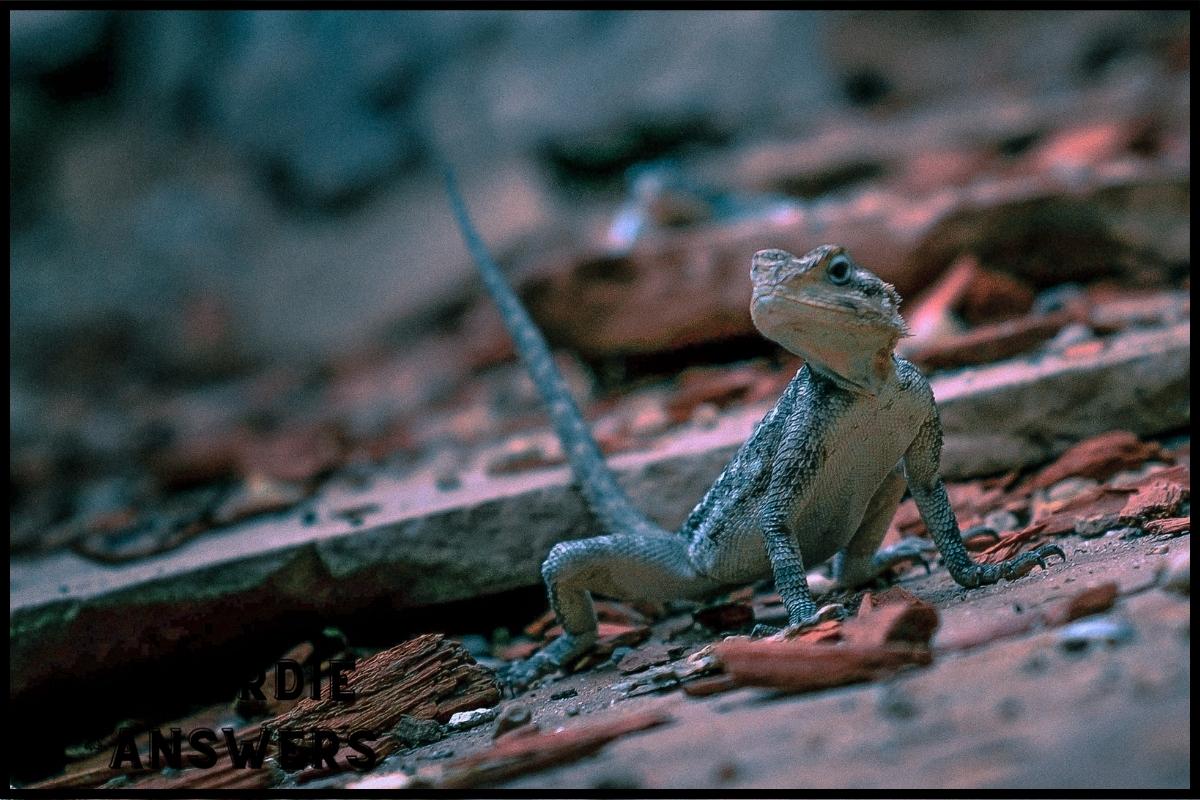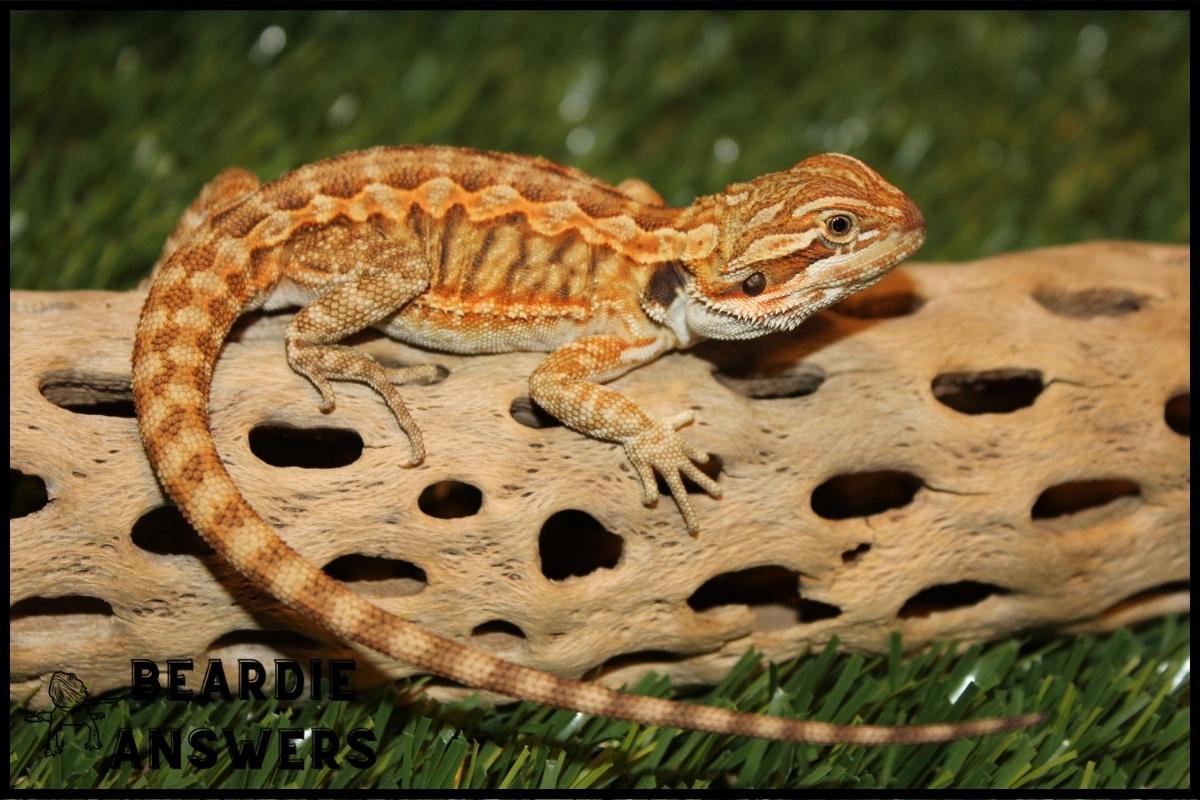[su_note note_color=”#eee”]
Bearded dragons have excellent eyesight and can see a wide range of colors, including UV light. Their eyes are located on the sides of their head, giving them a 180-degree field of vision. They can detect movement well and can track prey items efficiently. However, they have poor depth perception and rely on their sense of smell to detect food and predators.[/su_note]
Bearded dragons are fascinating reptiles with some remarkable physical abilities, including their eyesight. Known for having good vision and being able to see a wide range of colors, bearded dragons can also detect movement quickly and efficiently.
This article will explore the specifics of bearded dragon eyesight, taking an in-depth look at how they perceive the world around them. These lizards have evolved over millions of years to become adept hunters, relying heavily on sight when searching out prey or avoiding predators.
They possess large eyes that move independently from one another which gives them excellent depth perception and allows them to assess objects from multiple angles. Additionally, they have vertical pupils akin to those found in cats which helps them better capture light during dusk and dawn when visibility is poor.
What You'll Learn
What Do Bearded Dragons See?
Bearded dragons have good eyesight and can see a wide range of colors. They also excel in perceiving movement, making them great hunters in the wild.
Unfortunately, just like humans, bearded dragons are not immune to eye diseases and other vision problems such as cataracts or light sensitivity. To protect their eyes from further damage, owners should make sure that their pets get proper nutrition and enough UVB lighting for healthy growth.
Additionally, it’s important to regularly check your dragon’s eyes for any abnormalities such as discharge or swelling. It is essential to prevent and treat any eye issues that may arise since they can cause permanent blindness if left untreated.
With this knowledge in mind, you’ll be able to keep your pet safe while enjoying their vibrant world with its many colors! Now let’s move on to examining visual acuity in bearded dragons more closely.
Visual Acuity
Bearded dragons possess a superior visual acuity which allows them to quickly identify and process visual cues. They have excellent light sensitivity, allowing them to see in both low-light environments as well as bright sunlight. Their field depth is also impressive, enabling the dragon to easily spot movement within their environment from far distances.
When it comes to color hue and saturation, bearded dragons can pick up on subtle differences between colors that other reptiles may miss. This includes hues of blue, yellow, green, and red.
Here are some key advantages they experience due to this ability:
- Accurately recognize prey items from afar
- Quickly identify predators or threats in the area
- Easily differentiate between similar colored objects such as branches and plants
The bearded dragon’s keen vision helps them survive in their natural habitat by providing an advantage over other animals when it comes to detecting potential dangers. With these enhanced capabilities come the need for careful eye protection against ultraviolet rays and external trauma caused by its habitats elements.
Transitioning into the next topic of discussion – color perception – we will explore how their eyes interact with colors beyond what they can see with just plain sight.
Color Perception
First, let’s talk about Visual Range – how far can bearded dragons see colors? They can detect a wide range of colors and also pick up on movement.
Next, let’s discuss Color Discrimination – are bearded dragons able to differentiate between colors? Yes, they’re able to distinguish differences in colors and shades.
Finally, what about Color Memory? Can bearded dragons remember colors? Absolutely – they have the ability to remember colors and patterns over a period of time.
Visual Range
Bearded dragons have amazing vision, with a wide range of colors that they can see. They also possess thermal vision and UV sensitivity as well as light sensitivity, allowing them to detect even the smallest movements around them.
In addition, these creatures are able to adjust their pupils depending on how bright or dark it is outside—an ability that helps keep their eyesight sharp in different lighting conditions.
All this makes bearded dragons one of the most perceptive animals out there!
Color Discrimination
Not only do bearded dragons have incredible vision, but they also possess the ability to discriminate between colors. With their binocular vision and ultraviolet sensitivity, they’re able to detect subtle differences in color even if there’s a change in light intensity.
This makes them highly adept at recognizing shades of yellow, red, orange and other hues that make up their environment. Plus, thanks to their thermal vision, these creatures can pick up on temperature changes as well!
All this allows them to quickly observe and assess whatever is going on around them—making them truly remarkable animals.
Color Memory
Their color recognition is truly remarkable, and it’s also clear that their light sensitivity gives them an edge when it comes to camouflage adaptation.
This kind of capacity for memory allows bearded dragons to remember the colors they see in order to better identify potential threats or sources of food.
They can then use these memories to determine which hues will help them blend into their surroundings.
In other words, this incredible species has evolved to successfully recognize and recall different shades in order to survive!
Depth Perception
Measuring depth perception can be tricky, but scientists use a variety of methods to determine an animal’s ability to estimate distances. Causes of poor depth perception can vary, but generally can be attributed to either a physical or mental disability. Having good depth perception comes with many benefits, such as being able to judge distances accurately and quickly.
Measuring Depth Perception
Bearded dragons have impressive depth perception capabilities, as they are able to measure contrast, focus speed and use their eye anatomy to differentiate between objects in the distance.
This helps them make sound decisions quickly by allowing them to accurately judge how far away an object is.
With such sharp vision, bearded dragons can easily spot prey or danger from afar and take action accordingly.
The fact that these reptiles possess this skill sets them apart from many other species and aids in their success in the wild.
Causes Of Poor Depth Perception
When it comes to depth perception, there are a number of causes that can lead to poor performance.
For example, not having proper situational awareness or eyestrain prevention can cause difficulties in judging distances accurately.
Additionally, light sensitivity can also be an issue for some species with poorer vision as they struggle to differentiate between objects when the lighting is low.
Ultimately, these issues all contribute to reduced accuracy in determining how far away something might be and should be taken into account if you want your pet reptile’s vision to remain sharp.
Benefits Of Good Depth Perception
Having good depth perception can bring a lot of benefits, especially when it comes to peripheral vision and judging distances accurately.
It’s also important for spatial awareness and understanding the environment around you.
These abilities are essential in order to navigate their surroundings safely which is why having clear vision is so important.
Not only will your pet reptile have an easier time navigating but they’ll be less likely to get hurt or injured due to not being able to judge distances properly.
All in all, having good depth perception can help ensure that your pet stays safe and healthy while exploring its world.
Night Vision
The night vision of bearded dragons is quite remarkable. Like many nocturnal creatures, their eyes are adapted to the dark and they can spot potential food sources in low-light conditions with ease. Their eye anatomy features a tapetum lucidum that reflects light back into the eye, allowing for better visibility in darkness. This adaptation helps them hunt at night and find food more successfully than if they were diurnal animals.
Bearded dragons also benefit from UV lighting during the day to help regulate temperature control in both hot and cold climates. The UV lighting allows these reptiles to see clearly even when temperatures drop below optimal levels because it gives off ten times brighter illumination than natural daylight.
These combined adaptations ensure that bearded dragon’s have an edge over other species when hunting or searching for food regardless of the time of day or seasonal changes.
Their acute eyesight has undoubtedly been advantageous in terms of survival throughout evolution, but what impact does environment really have on their eyesight?
Impact Of Environment On Eyesight
The environment has a significant effect on bearded dragon eyesight. Light intensity, habitat size, prey size and temperature fluctuation all play a role in the vision of these reptiles.
For example, when light intensity is low they may have difficulty seeing clearly or at all due to their natural sensitivity to darkness. Additionally, if the habitat size is too small it can cause stress which can affect their ability to see properly. Prey size can also influence how well they see as smaller animals are more difficult for them to spot.
Temperature fluctuations can also alter their sight by affecting pupil dilation and UV exposure plays an important part in eye development and overall health.
Overall, environmental factors such as those mentioned above must be taken into consideration when assessing bearded dragon’s eyesight since each one affects it differently. Understanding this connection will help ensure that these creatures maintain good vision throughout their lifetime.
Conclusion
In conclusion, it is clear that bearded dragons have excellent eyesight. They possess sharp visual acuity and can distinguish a wide range of colors. Their depth perception allows them to quickly identify objects, making them adept hunters. Not only do they see well during the day, but their night vision gives ’em an edge in low-light conditions as well. Of course, environmental factors such as poor lighting or too much light can negatively impact their sight over time.
All in all, these fascinating creatures are truly blessed with exceptional vision! It’s no wonder why so many people keep bearded dragons as pets; after all, what other reptile has such good eyesight? I mean, come on – who wouldn’t want a pet that could spot prey from miles away? That would be pretty darn impressive if you ask me!
Plus, just think of all the cool things we’d get to show off at parties: ‘Hey everyone check out my dragon’s mad skills!’ At the end of the day, having a beardy around not only adds color and personality to our lives but also give us a chance to appreciate the wonders of nature up close and personal.
So let’s take care of our little scaley friends by providing proper environmental conditions for optimal eye health – your buddy will thank ya for it later!

Hi! My name is Bryan, I am the “one behind the words” here are BeardieAnswers.com. I believe that providing quality care and nutrition is the best way to ensure the health of your pet. Every beardie is special and deserves the best care and attention. If you have questions about your bearded dragon, please don’t hesitate to ask! View My Full Author Page




